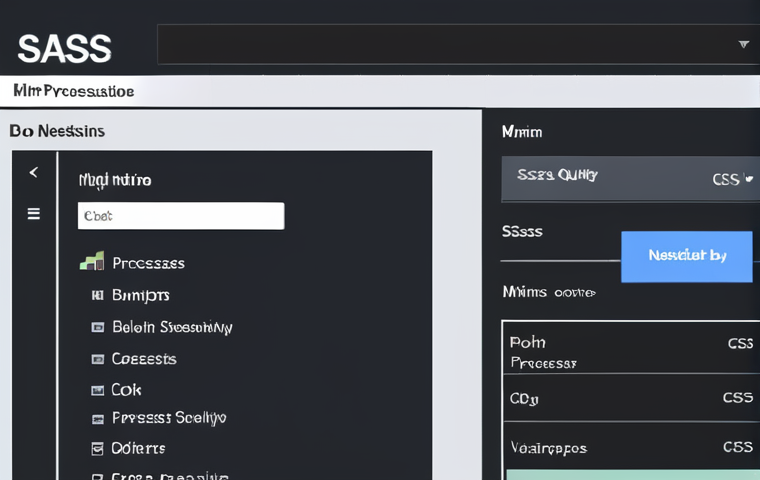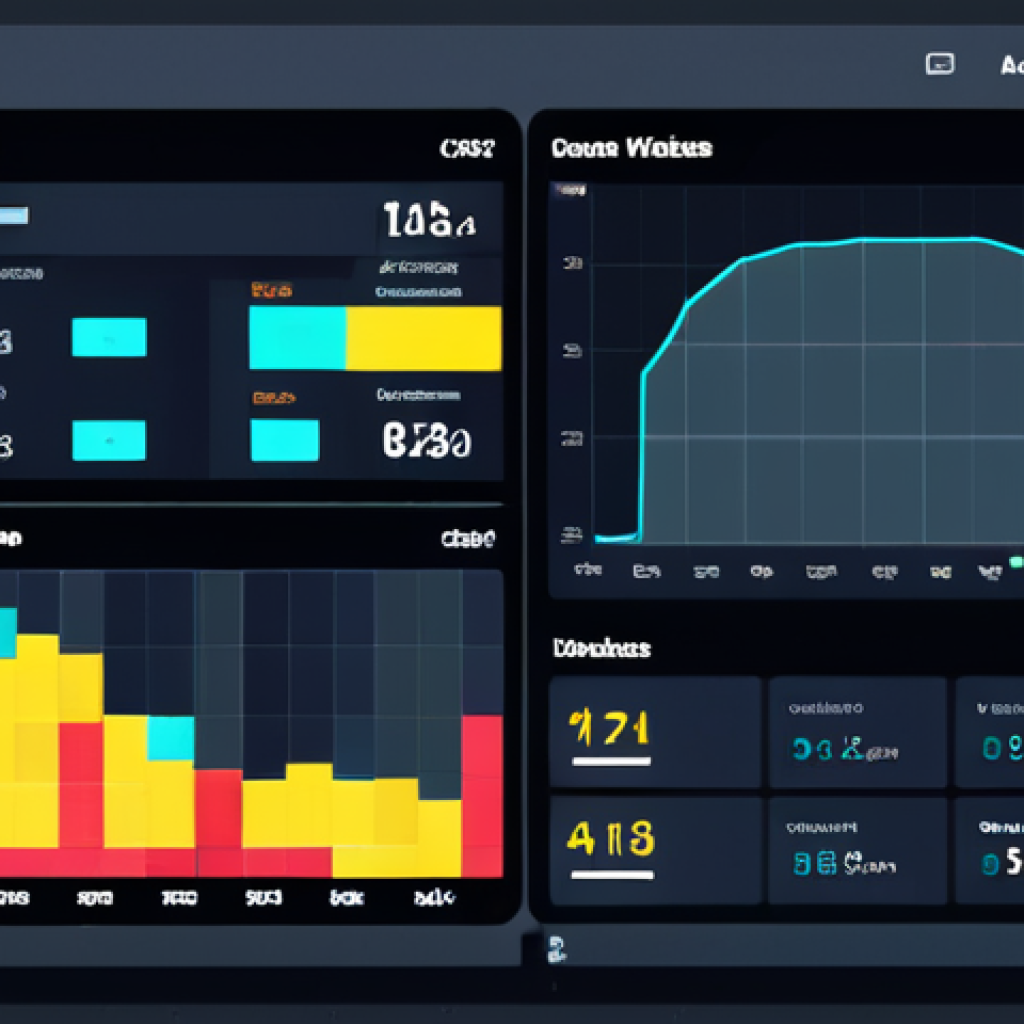The world of web development is constantly evolving, with new tools and technologies emerging at breakneck speed. It can be tough to keep up, but mastering the latest tools is essential for staying competitive and building cutting-edge web applications.
I remember when I first started, I was using tools that now feel like relics! These modern tools not only streamline your workflow but also open up possibilities for more innovative and efficient development.
So, let’s dive in and explore some of the most exciting web development tools available today. Let’s find out the details in the article below.
Unlocking Efficiency with Modern Frameworks

Component-Based Architectures
One of the biggest shifts I’ve seen is the move towards component-based architectures. Remember the days of tangled spaghetti code? Frameworks like React, Angular, and Vue.js have revolutionized how we build UIs.
React, with its virtual DOM, makes updates incredibly efficient. Angular provides a robust structure for larger applications, and Vue.js offers a gentle learning curve, perfect for smaller projects or quick prototyping.
I recently used React on a project that involved a complex data dashboard. The component-based approach allowed my team to divide the work effectively and maintain a clean, organized codebase.
It felt like building with LEGOs, each piece fitting perfectly into the larger structure. The performance gains were significant, especially when dealing with frequent data updates.
State Management Solutions
State management can quickly become a headache in large applications. Tools like Redux, Vuex, and Zustand help keep everything in order. I personally find Redux to be a bit verbose, but it’s incredibly powerful for complex state management.
Vuex, on the other hand, integrates seamlessly with Vue.js, making it a natural choice for Vue projects. And Zustand? That’s my go-to for simpler applications where I need a lightweight solution.
Imagine building an e-commerce site. You’ve got product listings, a shopping cart, user profiles – all requiring shared state. Without a solid state management solution, you’ll quickly find yourself drowning in prop drilling and unpredictable behavior.
These tools enforce a predictable data flow, making debugging and maintenance much easier.
Embracing the Power of Bundlers and Task Runners
Webpack: The King of Bundlers
Webpack is a beast, but it’s a necessary one. It takes all your JavaScript, CSS, images, and other assets and bundles them into optimized files for deployment.
It can be intimidating at first, but once you get the hang of it, it’s a game-changer. I remember spending hours manually concatenating and minifying files before I discovered Webpack.
It not only automates the process but also allows you to use modern features like code splitting and lazy loading. This means faster load times and a better user experience.
I recently configured Webpack for a large single-page application and the initial load time decreased by almost 50%. That’s a win in my book!
The Rise of ESBuild and Vite
While Webpack is powerful, it can be slow, especially for large projects. That’s where ESBuild and Vite come in. These tools leverage the native ES modules in browsers to provide incredibly fast build times.
Vite, in particular, has gained a lot of traction for its simplicity and speed. I tried Vite on a small side project and was blown away by how quickly it spun up a development server.
It’s a refreshing alternative to the more heavyweight bundlers, perfect for rapid prototyping and smaller applications. For those constantly battling with long build times, ESBuild and Vite are definitely worth exploring.
Leveling Up Your CSS Game
CSS Preprocessors: SASS and LESS
CSS preprocessors like SASS and LESS are lifesavers. They add features like variables, nesting, and mixins to CSS, making it more maintainable and easier to write.
I’ve been using SASS for years and can’t imagine going back to plain CSS. The ability to define variables for colors, fonts, and spacing keeps my stylesheets consistent and organized.
Nesting allows me to write more concise and readable code. And mixins? They’re perfect for reusing common styles across different elements.
Think about creating a set of buttons with different styles. With SASS, you can define a base button style and then use mixins to add variations for different colors and sizes.
It’s CSS on steroids!
CSS-in-JS: Styled Components and Emotion
CSS-in-JS is a more controversial approach, but it’s gaining popularity, especially in React projects. Libraries like Styled Components and Emotion allow you to write CSS directly in your JavaScript code.
I was skeptical at first, but I’ve come to appreciate the benefits. It makes component styling more modular and prevents naming conflicts. Plus, you can use JavaScript variables and logic directly in your styles.
Imagine building a dynamic theme switcher. With Styled Components, you can easily pass theme variables to your components and update their styles based on the current theme.
It’s a powerful way to create highly customizable and maintainable UIs.
Testing Tools for Robust Applications
Jest and Mocha: JavaScript Testing Frameworks
Testing is crucial for building reliable web applications. Jest and Mocha are two popular JavaScript testing frameworks. Jest, created by Facebook, is known for its ease of use and built-in features like mocking and code coverage.
Mocha, on the other hand, is more flexible and allows you to choose your own assertion library and mocking tools. I’ve used both extensively and find Jest to be a great option for larger projects where you want a comprehensive testing solution out of the box.
Mocha is better for smaller projects where you need more control over the testing environment. Think about testing a form validation function. With Jest, you can quickly write unit tests to ensure that the function correctly validates different types of input.
Cypress and Selenium: End-to-End Testing
Unit tests are important, but they only test individual components. End-to-end tests, on the other hand, test the entire application from the user’s perspective.
Cypress and Selenium are two popular end-to-end testing tools. Cypress is known for its developer-friendly API and fast test execution. Selenium is more mature and supports a wider range of browsers and platforms.
I’ve used Cypress to automate user flows in a complex web application. It’s incredibly satisfying to see the tests run and catch bugs before they make it to production.
Imagine testing the checkout process on an e-commerce site. With Cypress, you can automate the entire flow, from adding items to the cart to submitting the order.
Streamlining Development with Task Automation
npm Scripts: The Basics of Task Automation
npm scripts are a simple but powerful way to automate common development tasks. You can define custom scripts in your file and run them using the command.
I use npm scripts for everything from running tests to building the application. It’s a great way to simplify your workflow and avoid repetitive tasks.
Think about automating the process of linting and formatting your code. You can define npm scripts that run ESLint and Prettier, ensuring that your code adheres to a consistent style.
Gulp: Advanced Task Automation
For more complex task automation, Gulp is a great option. It allows you to define pipelines of tasks that can be executed in parallel or sequentially.
I’ve used Gulp to automate image optimization, CSS minification, and other performance-related tasks. It’s a powerful way to optimize your assets for production.
Imagine automating the process of resizing and compressing images. With Gulp, you can define a pipeline that takes all the images in your project, resizes them to different sizes, compresses them, and then saves them to a different directory.
Collaboration and Version Control Mastery
Git: The Cornerstone of Version Control
Git is non-negotiable. If you’re not using Git, you’re doing it wrong. This distributed version control system lets you track changes to your code, collaborate with others, and revert to previous versions if something goes wrong.
I use Git every single day, and it has saved me countless hours of debugging. Learn to branch, merge, and resolve conflicts effectively. It’s a skill that will pay off in any development role.
I remember accidentally deleting a crucial file once. Thanks to Git, I was able to recover it in seconds.
GitHub and GitLab: Collaborative Platforms
GitHub and GitLab are web-based platforms that provide hosting for Git repositories. They offer features like issue tracking, code review, and continuous integration/continuous deployment (CI/CD).
I use GitHub for most of my personal projects and GitLab for my work projects. Both are great platforms, but GitLab offers more features in its free tier.
Collaboration is key in modern development, and these platforms make it easy to work with others on the same codebase. Imagine working on a team project.
With GitHub, you can create pull requests to propose changes to the main codebase. Other team members can review your code, provide feedback, and approve your changes before they are merged.
| Tool | Category | Description | Why Use It? |
|---|---|---|---|
| React | Framework | JavaScript library for building user interfaces | Efficient UI updates, component-based architecture |
| Angular | Framework | Comprehensive framework for building complex web applications | Structured development, large ecosystem |
| Vue.js | Framework | Progressive framework for building user interfaces | Easy to learn, lightweight, flexible |
| Redux | State Management | Predictable state container for JavaScript apps | Centralized state management, predictable data flow |
| Webpack | Bundler | Module bundler for JavaScript applications | Optimized asset delivery, code splitting |
| SASS | CSS Preprocessor | CSS preprocessor with variables, nesting, and mixins | Maintainable and organized CSS |
| Jest | Testing | JavaScript testing framework with built-in features | Easy to use, comprehensive testing solution |
| Git | Version Control | Distributed version control system | Track changes, collaborate, revert to previous versions |
Optimizing Performance with Modern Techniques
Code Splitting and Lazy Loading
Performance is king. Users expect websites to load quickly and respond instantly. Code splitting and lazy loading are two techniques that can significantly improve performance.
Code splitting involves breaking your application into smaller chunks that can be loaded on demand. Lazy loading involves delaying the loading of resources until they are needed.
I recently implemented code splitting in a large single-page application and saw a dramatic improvement in initial load time. Imagine a website with multiple pages.
With code splitting, you can load only the code necessary for the current page, reducing the amount of code that needs to be downloaded initially.
Image Optimization
Images can be a major performance bottleneck. Optimizing your images can significantly reduce their file size without sacrificing quality. I use tools like ImageOptim and TinyPNG to compress my images before uploading them to the web.
It’s a simple step that can make a big difference. Think about optimizing images for different devices. You can use the element to serve different images based on the user’s screen size and resolution.
Unlocking efficiency in web development is an ongoing journey. It’s about embracing new tools, adapting to evolving best practices, and continuously learning.
The frameworks, bundlers, preprocessors, and testing tools mentioned above have dramatically changed the way I approach projects, making development faster, more efficient, and ultimately more enjoyable.
I hope this guide has given you a solid foundation for leveling up your web development game!
Wrapping Up
Modern web development is a constantly evolving landscape. Staying adaptable, experimenting with new tools, and sharing knowledge are vital. By embracing these frameworks and techniques, you’ll not only boost your efficiency but also create more robust and enjoyable user experiences.
Remember, the perfect stack is the one that best fits your project’s needs and your team’s strengths. Don’t be afraid to experiment and find what works best for you!
Keep learning, keep building, and keep pushing the boundaries of what’s possible on the web!
Handy Tips & Tricks
1. Optimize Images with Online Tools: Use sites like TinyPNG or ImageOptim to compress images without losing quality before uploading them.
2. Leverage Browser Developer Tools: Chrome DevTools and Firefox Developer Tools are invaluable for debugging, performance profiling, and understanding your website’s behavior.
3. Use a CSS Reset or Normalize: Start your CSS with a reset (like Reset.css) or normalize (like Normalize.css) to ensure consistent styling across different browsers.
4. Embrace Flexbox and Grid for Layouts: These CSS layout modules make creating responsive and complex layouts much easier than traditional methods.
5. Learn Keyboard Shortcuts for Your Editor: Mastering shortcuts in your code editor can significantly speed up your coding process.
Key Takeaways
* Component-based architectures using React, Angular, or Vue.js significantly improve code organization and maintainability. * State management solutions like Redux, Vuex, and Zustand help manage complex data flows in large applications.
* Bundlers like Webpack, ESBuild, and Vite optimize assets for faster load times. * CSS preprocessors (SASS, LESS) and CSS-in-JS libraries (Styled Components, Emotion) enhance CSS maintainability.
* Testing frameworks (Jest, Mocha) and end-to-end testing tools (Cypress, Selenium) ensure application robustness. * Task automation tools (npm scripts, Gulp) streamline development workflows.
* Version control with Git and collaborative platforms like GitHub and GitLab are essential for team collaboration. * Code splitting and image optimization techniques improve website performance.
Frequently Asked Questions (FAQ) 📖
Q: What’s the best way to stay current with the ever-changing landscape of web development tools?
A: Honestly, it’s a constant hustle! What’s worked for me is subscribing to a few key industry newsletters – like those from Smashing Magazine or CSS-Tricks – and setting aside a couple of hours each week to explore new frameworks or libraries that catch my eye.
Don’t feel pressured to learn everything at once, just focus on understanding the core concepts and building a small project with each new tool to really solidify your knowledge.
I also find that attending online conferences and watching recorded talks can be a great way to discover what other developers are using and how they’re solving real-world problems.
Q: Are there any specific “must-have” tools for modern web development that you’d recommend?
A: Well, “must-have” is subjective, but if I had to pick a few, I’d say a good package manager like npm or Yarn is crucial for managing dependencies. For front-end development, I’m a big fan of React – its component-based architecture makes building complex UIs much more manageable, and its huge community means you can usually find help when you get stuck.
On the back-end, Node.js with Express provides a flexible and scalable environment for building APIs. Of course, version control with Git is non-negotiable!
And don’t forget about a robust testing framework like Jest or Mocha to ensure your code is working correctly. Beyond the core tools, I’ve really been loving VS Code as my IDE, the extensions are amazing!
Q: How important is it to invest time in learning advanced tools like Web
A: ssembly or serverless functions? A3: That really depends on the type of projects you’re working on and where you see your career heading. WebAssembly, for example, can provide significant performance improvements for computationally intensive tasks, but it also comes with a steeper learning curve.
If you’re building high-performance web applications or games, then it’s definitely worth exploring. Serverless functions (like AWS Lambda or Netlify Functions) can simplify the deployment and scaling of your applications, but they also introduce new challenges like cold starts and vendor lock-in.
My advice would be to start by understanding the fundamentals of web development and then gradually explore these more advanced tools as your needs evolve.
I remember trying to jump straight into serverless functions without understanding the basics of back-end development, and it was a complete disaster!
So, take your time, focus on building a solid foundation, and don’t be afraid to experiment.
📚 References
Wikipedia Encyclopedia
구글 검색 결과
구글 검색 결과
구글 검색 결과
구글 검색 결과
구글 검색 결과

